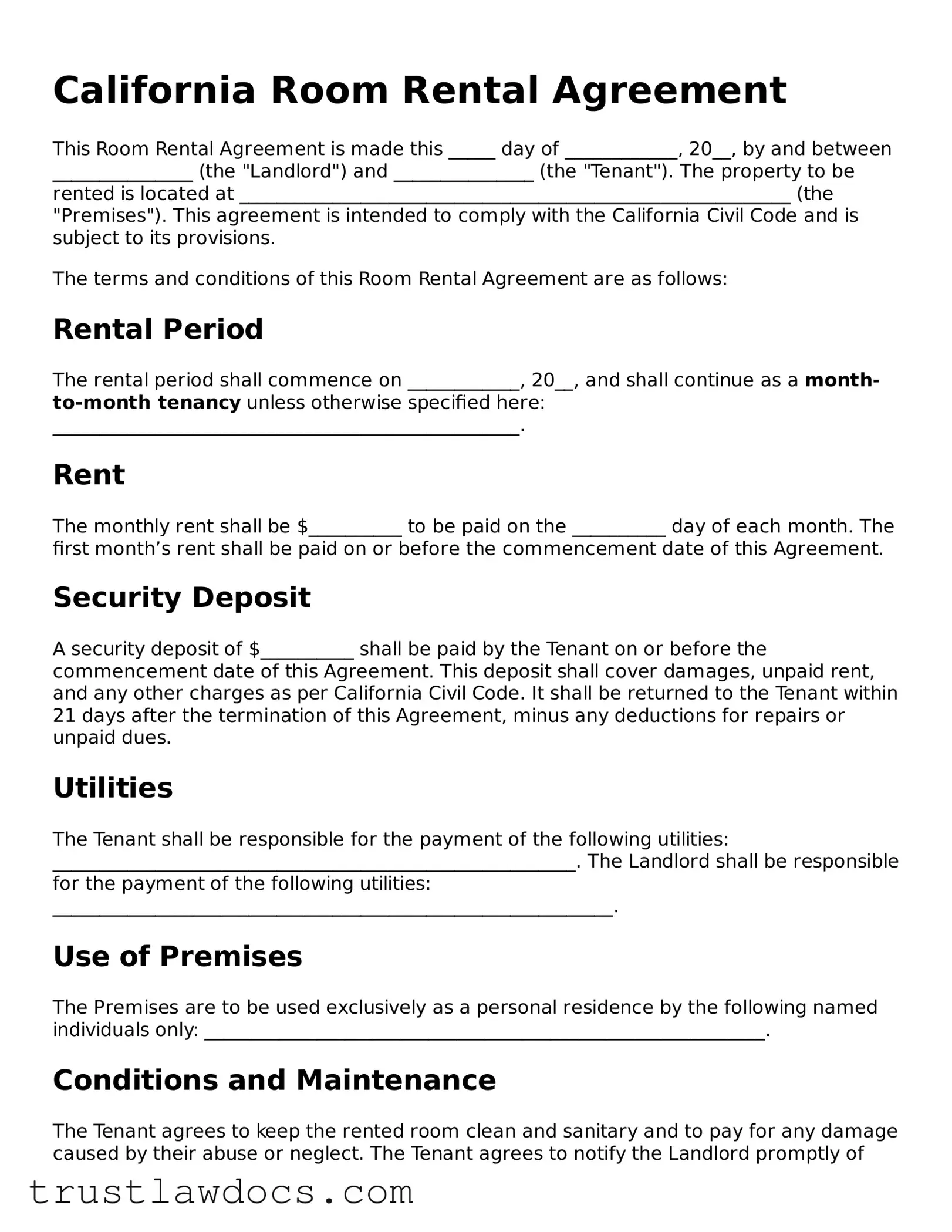The California Room Rental Agreement form shares similarities with a Lease Agreement, which is a broader document that outlines the terms under which a tenant agrees to rent property from a landlord. Both documents establish the duration of the rental period, payment details, and responsibilities of each party. However, the Room Rental Agreement is more specific to situations where an individual rents a single room within a larger property.
Another comparable document is the Sublease Agreement. This agreement comes into play when a tenant, or sublessor, decides to rent out their rented space to another person, known as a sublessee. Like the Room Rental Agreement, it covers terms regarding rent, utilities, and duration. The critical difference lies in the sublessor's role, who acts as a quasi-landlord to the sublessee, within the framework set by the original lease.
A Month-to-Month Rental Agreement also shares commonalities with the Room Rental Agreement, particularly in its provision for a flexible duration of tenancy. Unlike the fixed term specified in many lease agreements, including the typical Room Rental Agreement, a month-to-month agreement allows either party to terminate the agreement with proper notice, usually 30 days, without breaching the terms.
The Vacation Rental Agreement is akin to the Room Rental Agreement but is tailored for short-term rentals. These are often used for vacation properties, focusing on the specifics of temporary stays, such as check-in/check-out times, specific house rules, and often, a detailed list of amenities. Despite these differences, both agreements serve to protect the rights and obligations of the landlord and tenant.
A Co-Tenancy Agreement is another document with similarities, particularly relevant when multiple tenants share a single rental property. Like the Room Rental Agreement, it outlines the individual and collective responsibilities of the tenants, including rent contributions and maintenance duties. However, it places more emphasis on the relationships and agreements between the co-tenants themselves.
The Rent-to-Own Lease Agreement combines elements of a lease and a sales agreement, allowing a tenant to rent property with the option to purchase it later. Although it serves a different primary purpose than the Room Rental Agreement, both set forth the conditions under which the property is to be rented, including rent amounts and the responsibilities of both parties.
A Residential Lease Agreement is a comprehensive contract used for renting out residences, whether apartments, houses, or condominiums. Similar to the Room Rental Agreement, it details rent, security deposit, and lease term. Yet, it is more encompassing, often including policies on pets, subletting, and maintenance, tailored to a full dwelling rather than a single room.
Tenant Estoppel Certificates, while not agreements between landlords and tenants regarding the terms of a stay, relate closely to Room Rental Agreements in that they can verify the current terms of a lease. This document is often used during real estate transactions to confirm the status of existing leases, providing assurance to lenders or buyers about the property's occupied conditions.
The Boarding House Lease Agreement is quite similar to the Room Rental Agreement as it involves renting out individual rooms, typically with shared common areas like kitchens and living rooms. This agreement addresses specific needs of such arrangements, including the rules for common area use, much like the room rental situation but tailored to structures designed for multiple individual renters.
Finally, the Property Management Agreement, while not a lease or rental agreement itself, is connected to the Room Rental Agreement through its function of detailing the relationship between property owners and the managers who oversee rental properties on their behalf. It includes provisions for handling lease agreements, including those for individual rooms, thereby indirectly influencing the terms and enforcement of Room Rental Agreements.
